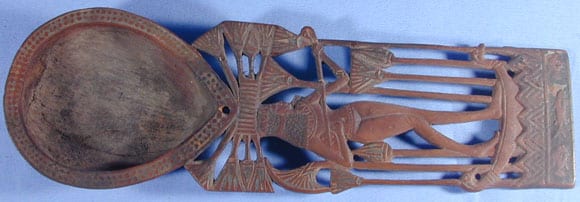Question(s) of the Week: What is a toilet spoon and did you kill that
By Lisa, on 26 February 2014
 It’s been almost two years since I began working in UCL’s three public museums as a student engager and in that time I’ve been asked a lot of amusing questions, ranging from “did you kill that?” (most often asked by children visiting the Grant) to “would you like to grab a drink?” (most often asked by visitors on Friday afternoons who don’t realize I actually work at the museum which is why I have stopped to have a chat with them) to “Is that for sale?” (asked by one visitor at the Petrie while pointing at a faience figurine dating from the middle kingdom).
It’s been almost two years since I began working in UCL’s three public museums as a student engager and in that time I’ve been asked a lot of amusing questions, ranging from “did you kill that?” (most often asked by children visiting the Grant) to “would you like to grab a drink?” (most often asked by visitors on Friday afternoons who don’t realize I actually work at the museum which is why I have stopped to have a chat with them) to “Is that for sale?” (asked by one visitor at the Petrie while pointing at a faience figurine dating from the middle kingdom).
As a student engager it is my job to talk to the visitors and engage them with the collection as well as my own doctoral research, which is on the nineteenth century history of gender and medicine. And by talking with the visitors I inevitably get asked a lot of questions, some of which I have absolutely no clue how to answer. I do know for certain that I didn’t kill any of the animals that currently occupy the many jars that fill the Grant Museum of Zoology. However, I don’t know how all those animals got there (a rather macabre thought) nor do I know what a toilet spoon is, or at least I didn’t until I was asked by a boy and his father during my shift at the Petrie last month. Turns out toilet spoons, or cosmetic spoons, were used to store perfumes for makeup in ancient Egyptian society.
There were also objects called toilet trays, which are small bowls made from stone and thought to be produced as offerings in the cult of Isis. Beautifully and intricately decorated, Petrie classified these trays as “cosmetic” in function- although that remains in doubt. Needless to say the little boy was a bit disappointed that the toilet spoon (and its tray sister) did not have another function in the ancient world.
And that I think is the best part of my job- learning from the visitors as much they (hopefully!) learn from me. So please come by one of our museums from 1:30 to 4:30, look for the people wearing “UCL Museums” name tags and wandering all around the museum floor and ask away! You may be surprised about what you learn- I know I will be.
 Close
Close


